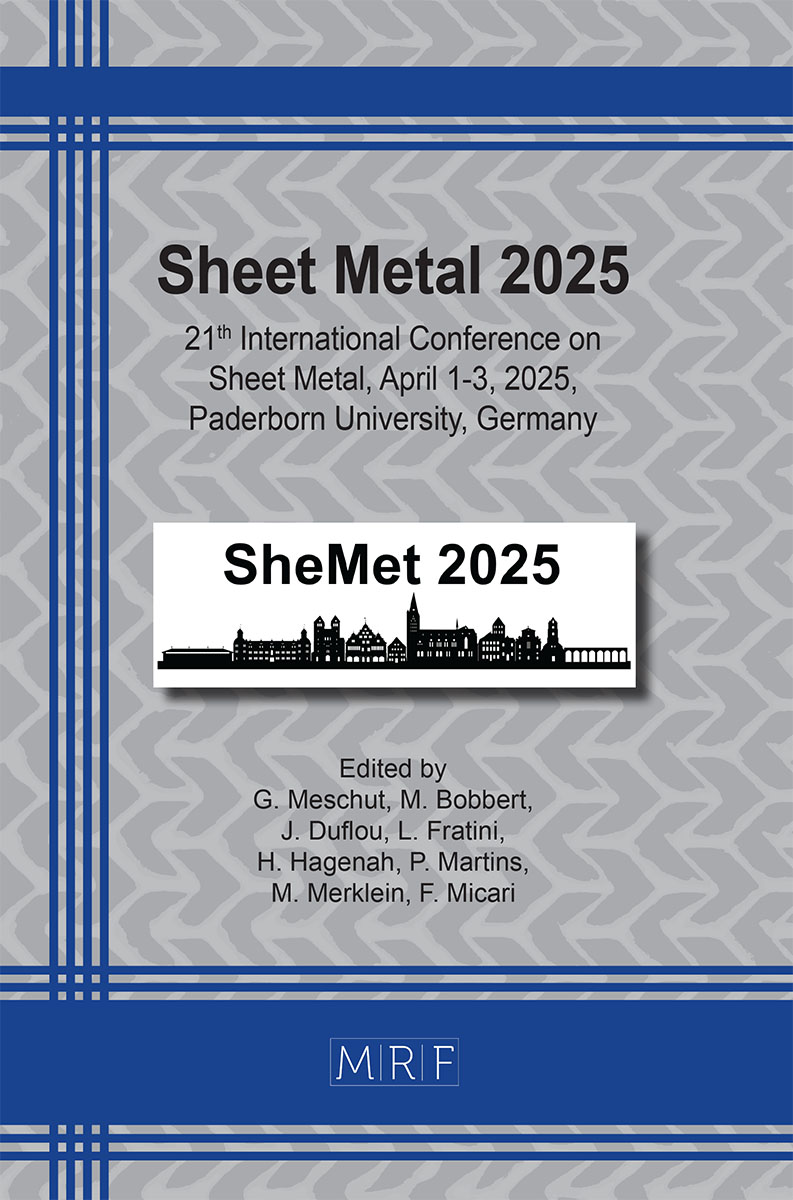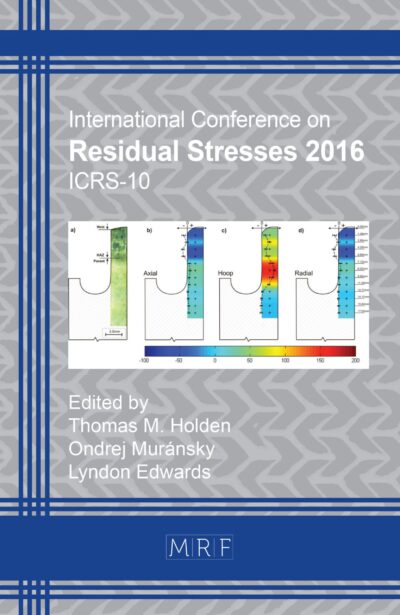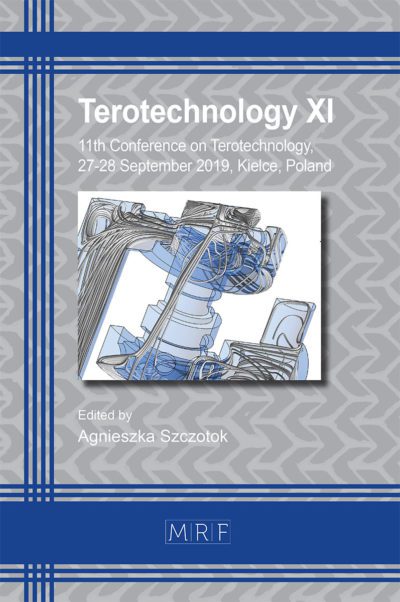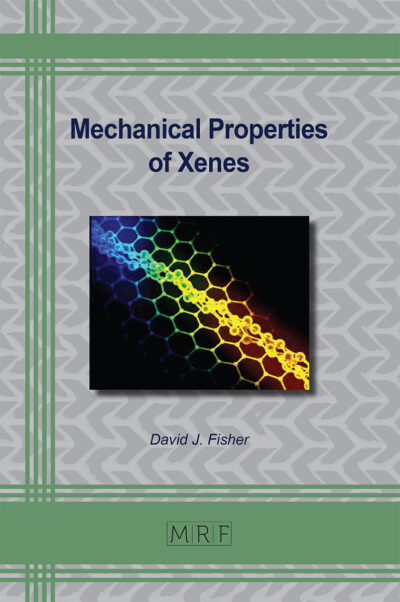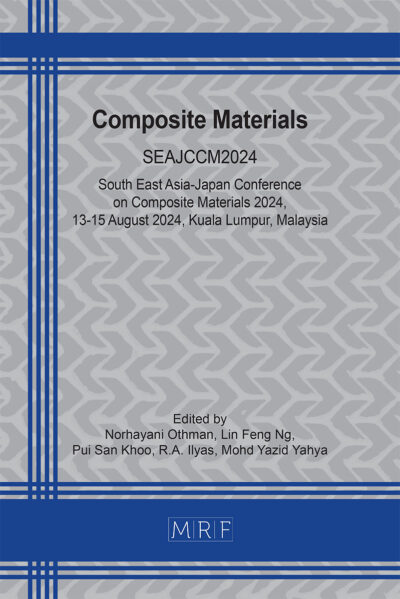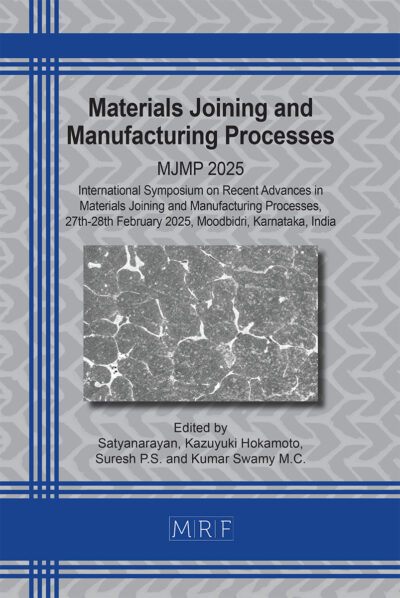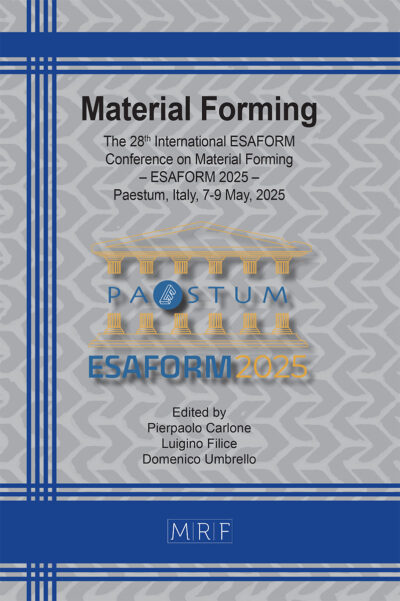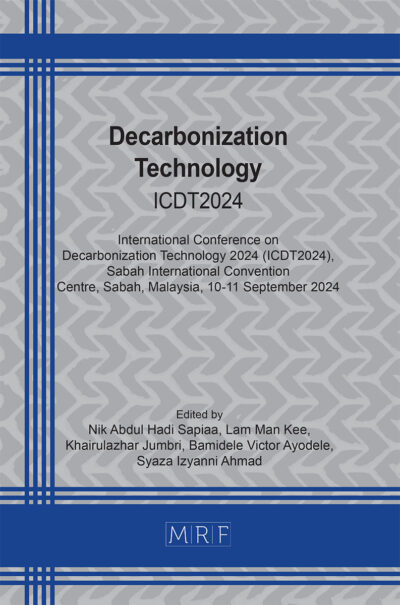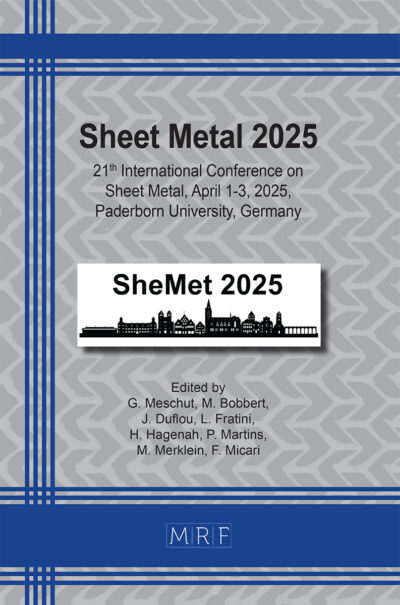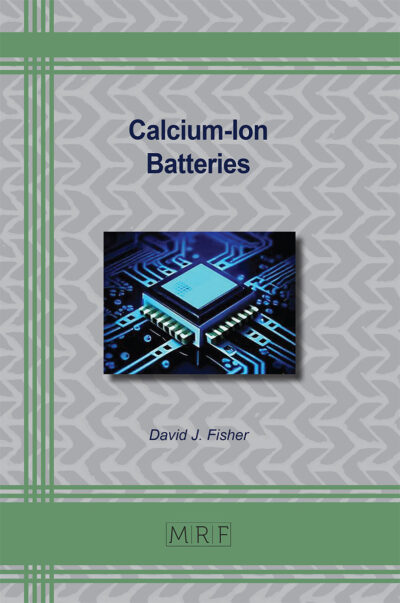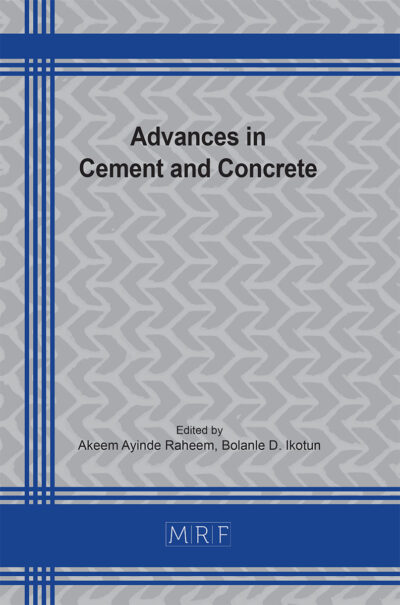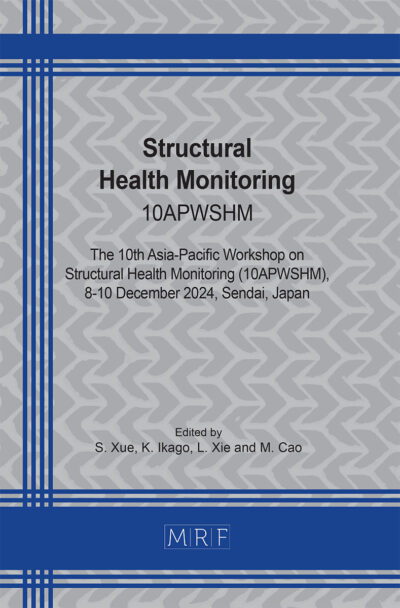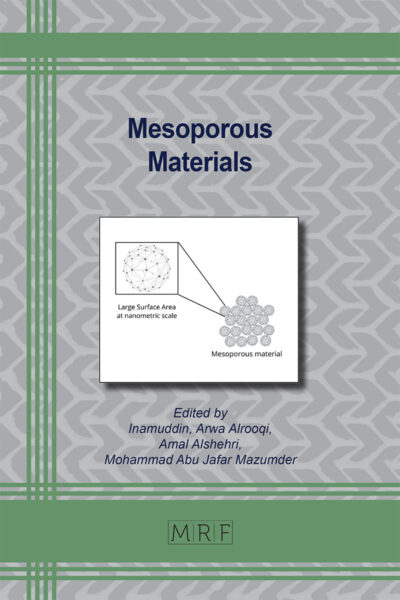A numerical model to study the temperature and residual stress profiles in hybrid additive manufacturing
Gaetano Pollara, Dina Palmeri, Gianluca Buffa, Livan Fratini
Abstract. Recently, there has been an increasing interest in hybrid additive manufacturing (HAM) technologies to overcome the limits of conventional and additive manufacturing (AM) technologies. In the case of metals, HAM can be used to combine AM with forming operations. This concept can be applied in both the production of bulk and sheet metal parts. When sheet metal parts are taken into consideration, usually AM technology such as laser powder bed fusion (L-PBF) and direct energy deposition (DED) can be combined with traditional forming operations. L-PBF is preferred when small details have to be applied to the metal sheet before undergoing the forming process. Thus, mass customization can be achieved by using the flexibility of the AM process, its ability to print complex geometries, and the speed of the sheet metal forming process. In this study, a numerical model was developed in order to analyze the influence of the L-PBF process on the metal sheet. The results show how the metal sheet is strongly influenced by the thermal input due to the deposition of the AM part. Moreover, the presence of residual stress can be observed within the metal sheet, which can result in distortion and create problems in the following forming step. The numerical model highlights also the more critical area, in which high-stress concentration is observed.
Keywords
Hybrid Manufacturing, Selective Laser Melting (SLM), Numerical Simulation
Published online 4/1/2025, 6 pages
Copyright © 2025 by the author(s)
Published under license by Materials Research Forum LLC., Millersville PA, USA
Citation: Gaetano Pollara, Dina Palmeri, Gianluca Buffa, Livan Fratini, A numerical model to study the temperature and residual stress profiles in hybrid additive manufacturing, Materials Research Proceedings, Vol. 52, pp 351-356, 2025
DOI: https://doi.org/10.21741/9781644903551-43
The article was published as article 43 of the book Sheet Metal 2025
![]() Content from this work may be used under the terms of the Creative Commons Attribution 3.0 license. Any further distribution of this work must maintain attribution to the author(s) and the title of the work, journal citation and DOI.
Content from this work may be used under the terms of the Creative Commons Attribution 3.0 license. Any further distribution of this work must maintain attribution to the author(s) and the title of the work, journal citation and DOI.
References
[1] T. Ngo, A. Kashani, G. Imbalzano, T. Nguyen, D. Hui, Additive manufacturing (3D printing): A review of materials, methods, applications and challenges, Compos B Eng 143 (2018) 25.
[2] B. Blakey-Milner, P. Gradl, G. Snedden, M. Brooks, J. Pitot, E. Lopez, M. Leary, F. Berto, A. du Plessis, Metal additive manufacturing in aerospace: A review, Mater Des 209 (2021) 110008. https://doi.org/10.1016/j.matdes.2021.110008.
[3] B. Ahuja, A. Schaub, M. Karg, R. Schmidt, M. Merklein, M. Schmidt, High power laser beam melting of Ti6Al4V on formed sheet metal to achieve hybrid structures, in: H. Helvajian, A. Piqué, M. Wegener, B. Gu (Eds.), 2015: p. 93530X. https://doi.org/10.1117/12.2082919.
[4] D. Svetlizky, M. Das, B. Zheng, A.L. Vyatskikh, S. Bose, A. Bandyopadhyay, J.M. Schoenung, E.J. Lavernia, N. Eliaz, Directed energy deposition (DED) additive manufacturing: Physical characteristics, defects, challenges and applications, Materials Today 49 (2021) 271–295. https://doi.org/10.1016/j.mattod.2021.03.020.
[5] A. Schaub, B. Ahuja, L. Butzhammer, J. Osterziel, M. Schmidt, M. Merklein, Additive Manufacturing of Functional Elements on Sheet Metal, Phys Procedia 83 (2016) 797–807. https://doi.org/10.1016/j.phpro.2016.08.082.
[6] D.-G. Ahn, Correction to: Directed Energy Deposition (DED) Process: State of the Art, International Journal of Precision Engineering and Manufacturing-Green Technology 9 (2022) 1215–1215. https://doi.org/10.1007/s40684-021-00401-z.
[7] J. Hafenecker, D. Bartels, C.-M. Kuball, M. Kreß, R. Rothfelder, M. Schmidt, M. Merklein, Hybrid process chains combining metal additive manufacturing and forming – A review, CIRP J Manuf Sci Technol 46 (2023) 98–115. https://doi.org/10.1016/j.cirpj.2023.08.002.
[8] T. Papke, P. Dubjella, L. Butzhammer, F. Huber, O. Petrunenko, D. Klose, M. Schmidt, M. Merklein, Influence of a bending operation on the bonding strength for hybrid parts made of Ti-6Al-4V, Procedia CIRP 74 (2018) 290–294. https://doi.org/10.1016/j.procir.2018.08.113.
[9] M. Merklein, R. Schulte, T. Papke, An innovative process combination of additive manufacturing and sheet bulk metal forming for manufacturing a functional hybrid part, J Mater Process Technol 291 (2021) 117032. https://doi.org/10.1016/j.jmatprotec.2020.117032.
[10] D. Palmeri, G. Pollara, R. Licari, F. Micari, Finite Element Method in L-PBF of Ti-6Al-4V: Influence of Laser Power and Scan Speed on Residual Stress and Part Distortion, Metals (Basel) 13 (2023) 1907. https://doi.org/10.3390/met13111907.

